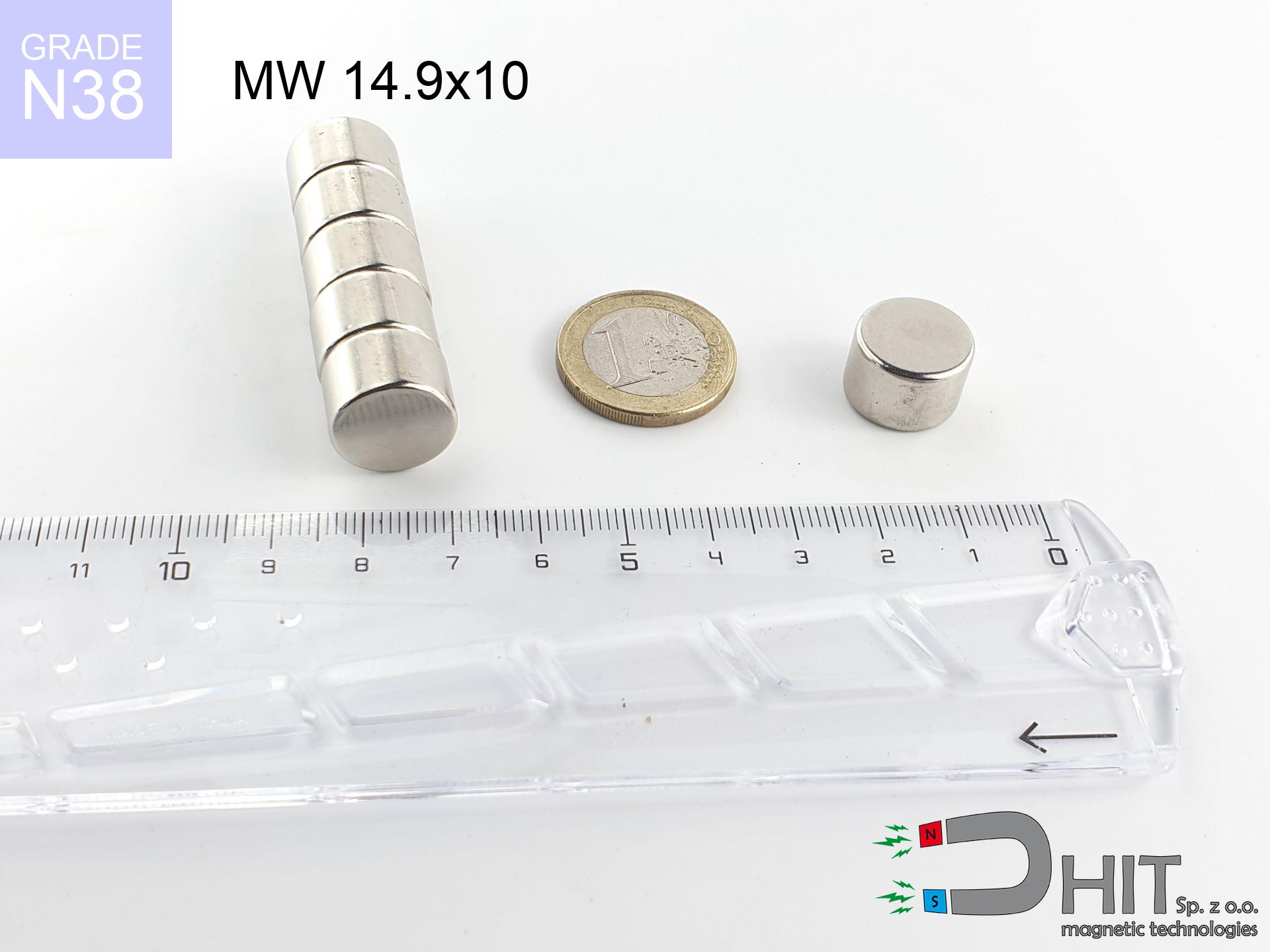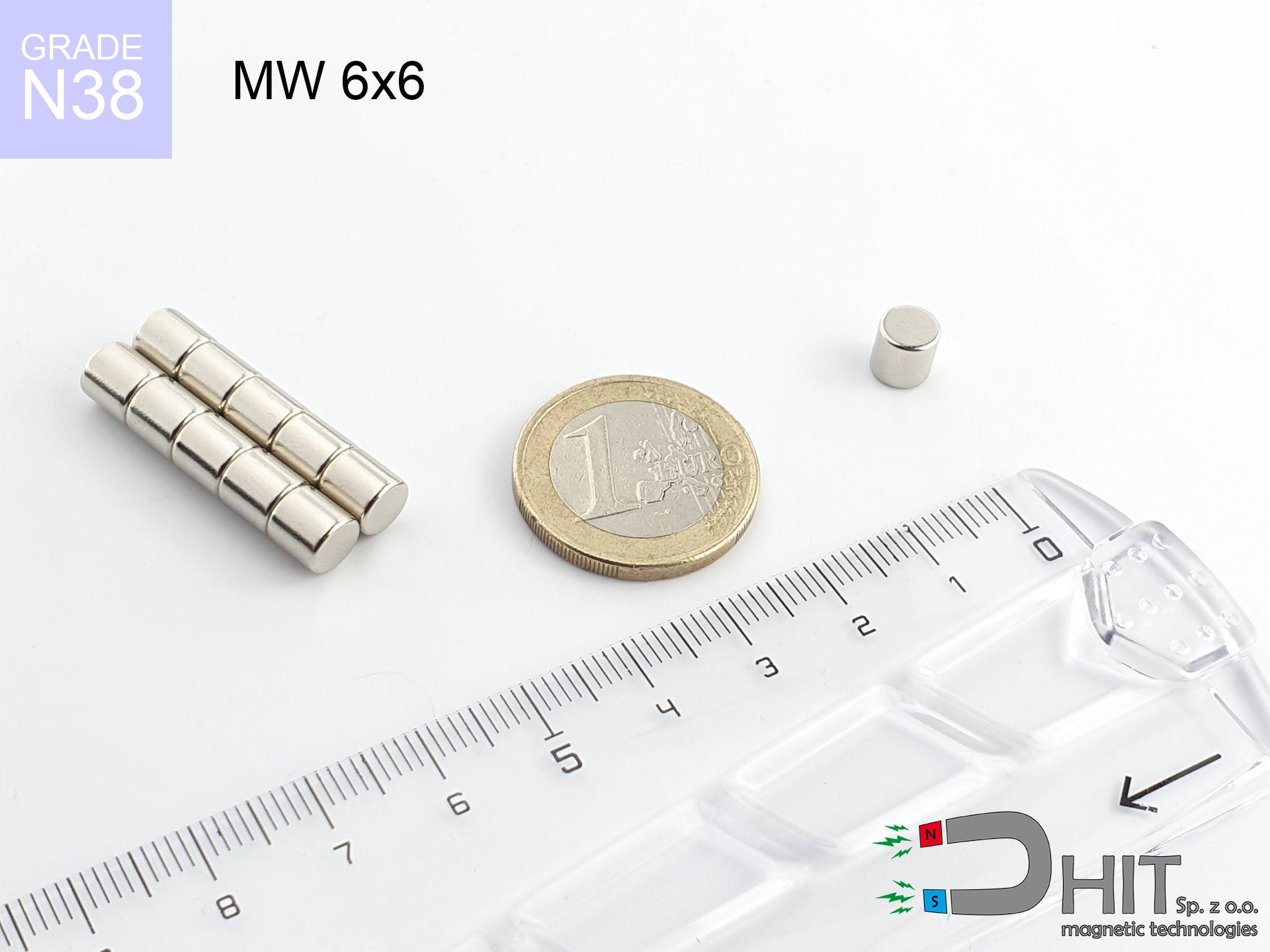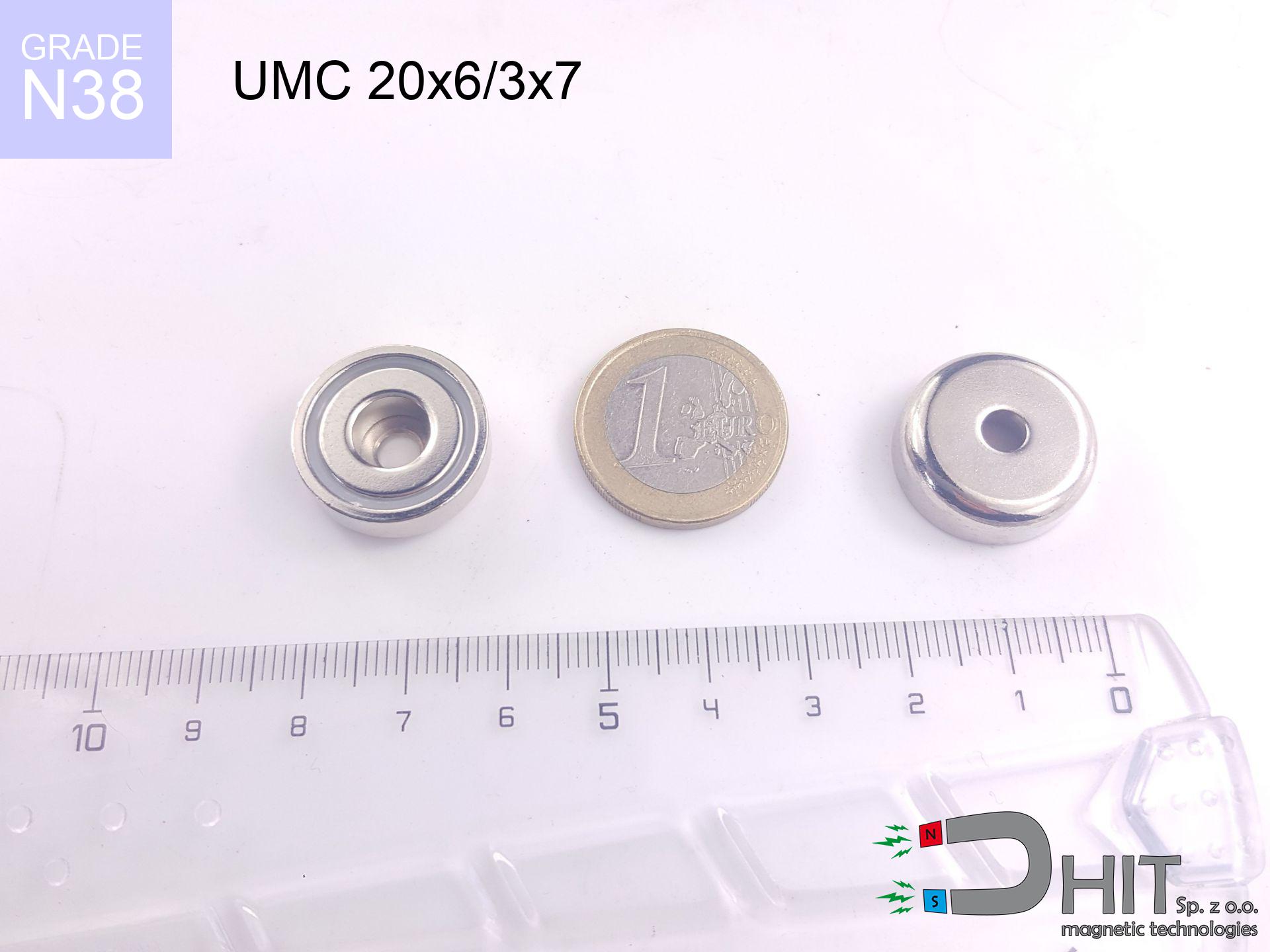UMGZ 16x13x5 [M4] GZ / N38
magnetic holder external thread
catalog number 190321
GTIN: 5906301813804
diameter Ø
16
mm [±0,1 mm]
height with thread
13
mm [±0,1 mm]
height
5
mm [±0,1 mm]
capacity ~
5.00 kg / 49.03 N
max. temperature
≤ 80
°C
catalog number 190321
GTIN: 5906301813804
diameter Ø
16 mm [±0,1 mm]
height with thread
13 mm [±0,1 mm]
height
5 mm [±0,1 mm]
capacity ~
5.00 kg / 49.03 N
max. temperature
≤ 80 °C
3.89 ZŁ gross price (including VAT) / pcs +
3.16 ZŁ net price + 23% VAT / pcs
bulk discounts:
need more quantity?Don't know what to choose?
Give us a call tel: +48 888 99 98 98 or write through contact form on the contact page. You can check the lifting capacity as well as the appearance of neodymium magnets in our magnetic mass calculator magnetic calculator
Orders placed by 2:00 PM will be shipped on the same business day.
Specification: magnetic holder external thread 16x13x5 [M4] GZ / N38
Magnetic properties of the material N38
Physical properties of sintered neodymium magnets Nd2Fe14B
Recommended articles for purchase
Advantages and disadvantages of neodymium magnets NdFeB.
In addition to immense strength, neodymium magnets have the following advantages:
- They do not lose their power (of the magnet). After about 10 years, their strength decreases by only ~1% (theoretically),
- They are exceptionally resistant to demagnetization caused by an external magnetic field,
- Thanks to the shiny finish and nickel, gold, or silver coating, they have an aesthetic appearance,
- They possess very high magnetic induction on the surface of the magnet,
- By using an appropriate combination of materials, they can achieve significant thermal resistance, allowing them to operate at temperatures up to 230°C and above...
- Due to the option of accurate forming and adaptation to individual needs – neodymium magnets can be produced in many variants of shapes and sizes, which enhances their versatility in applications.
- Key role in advanced technologically fields – are utilized in hard drives, electric motors, medical apparatus and very advanced devices.
Disadvantages of neodymium magnets:
- They can break as they are extremely fragile when subjected to a strong impact. If the magnets are exposed to impacts, we recommend using magnets in a protective case. The steel housing in the form of a holder protects the magnet from impacts and also increases its overall strength,
- High temperatures can reduce the power of neodymium magnets. Typically, after heating above 80°C, most of them experience a permanent loss in strength (although it is dependent on the form and size). To prevent this, we offer special magnets marked with the symbol [AH], which are highly resistant to high temperatures. They can operate even at temperatures up to 230°C, making them an ideal solution for applications requiring high-temperature operation,
- Due to their susceptibility to corrosion in a humid environment, we recommend using waterproof magnets made of rubber, plastic, or other moisture-resistant materials when using them outdoors,
- Limited ability to create threads or complex shapes in the magnet - the use of a housing is recommended - magnetic holder
- Possible danger associated with microscopic parts of magnets pose a threat, in case of ingestion, which is particularly important in the aspect of protecting young children. Furthermore, miniscule components of these devices can be problematic in medical diagnosis when they are in the body.
Caution with Neodymium Magnets
Neodymium magnetic are highly delicate, they easily crack and can become damaged.
Neodymium magnets are highly delicate, and by joining them in an uncontrolled manner, they will crumble. Neodymium magnets are made of metal and coated with a shiny nickel surface, but they are not as hard as steel. In the event of a collision between two magnets, there may be a scattering of fragments in different directions. Protecting your eyes is crucial in such a situation.
Keep neodymium magnets as far away as possible from GPS and smartphones.
Neodymium magnets are a source of strong magnetic fields that cause interference with magnetometers and compasses used in navigation, as well as internal compasses of smartphones and GPS devices.
The magnet is coated with nickel - be careful if you have an allergy.
Studies show a small percentage of people have allergies to certain metals, including nickel. An allergic reaction often manifests as skin redness and rash. If you have a nickel allergy, try wearing gloves or avoid direct contact with nickel-plated neodymium magnets.
It is crucial not to allow the magnets to pinch together uncontrollably or place your fingers in their path as they attract to each other.
Magnets will jump and touch together within a distance of several to around 10 cm from each other.
Dust and powder from neodymium magnets are flammable.
Do not attempt to drill into neodymium magnets. Mechanical processing is also not recommended. If the magnet is crushed into fine powder or dust, it becomes highly flammable.
Neodymium magnets can demagnetize at high temperatures.
Although magnets are generally resilient, their ability to maintain their magnetic potency can be influenced by factors like the type of material used, the magnet's shape, and the intended purpose for which it is employed.
Under no circumstances should neodymium magnets be placed near a computer HDD, TV, and wallet.
Neodymium magnets produce intense magnetic fields that can destroy magnetic media such as floppy disks, video tapes, HDDs, credit cards, magnetic ID cards, cassette tapes, etc. devices. They can also damage devices like video players, televisions, CRT computer monitors. Do not forget to keep neodymium magnets away from these electronic devices.
People with pacemakers are advised to avoid neodymium magnets.
In the case of neodymium magnets, there is a strong magnetic field. As a result, it interferes with the operation of a heart pacemaker. Even if the magnetic field does not affect the device, it can damage its components or deactivate the entire device.
Neodymium magnets are the most powerful, most remarkable magnets on earth, and the surprising force between them can shock you at first.
To use magnets properly, it is best to familiarize yourself with our information beforehand. This will help you avoid significant harm to your body and the magnets themselves.
Neodymium magnets should not be around youngest children.
Not all neodymium magnets are toys, so do not let children play with them. In such a situation, surgery is necessary to remove them. In the worst case scenario, it can result in death.
So you are aware of why neodymium magnets are so dangerous, see the article titled How dangerous are very strong neodymium magnets?.

![UMGZ 16x13x5 [M4] GZ / N38 UMGZ 16x13x5 [M4] GZ / N38](https://cdn3.dhit.pl/graphics/products/um-16x13x5-m4-gz-cor.jpg)
![UMGZ 16x13x5 [M4] GZ / N38 UMGZ 16x13x5 [M4] GZ / N38](https://cdn3.dhit.pl/graphics/products/umgw-16x13x5-m4-gz-vuz.jpg)





